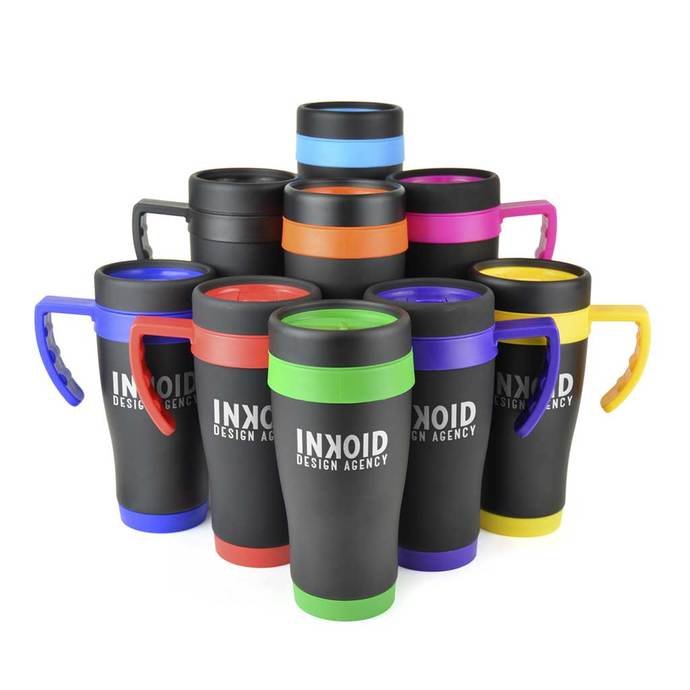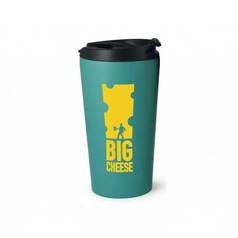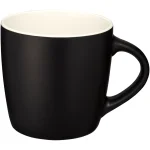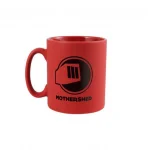Promotional Ceramic Mugs
Manufacturing Process
Earthenware is made of clay fired at less than 2,100 degrees Fahrenheit. Ceramic refers to any product (earthenware, porcelain or brick) made from a non-metallic mineral such as clay fired at a high temperature. The differences between the different various types of promotional ceramic mugs depends on the material (clay) from which they are made and the temperature they are fired.
The clay is still absorbent after firing, so it is glazed in order to be used as a ceramic mug. The type of glazing used will depend on the quality of the mug. Certain glazes should only be used for decorative containers because they can be toxic if used in food or drink containers. Stone ware is also made of clay that is fired at temperatures between 2,100 and 2,300 degrees Fahrenheit. It is not absorbent after firing but it is still painted or glazed for a decorative effect.
The Different Types of Coffee Cups
Coffee cups are typically made out of ceramic and have a single handle. Ceramic provides insulation to the beverage and can be quickly washed with cold water without fear of breakage, compared to glassware. The difference in insulation, between promotional ceramic mugs and stainless-steel metal mugs, is especially noticeable during winter as both are susceptible to heat loss. Ceramic does keep drinks warmer than glass, but we’ve yet to see a travel mug made out of glass.
The difference between porcelain and ceramic mugs depends on the clay from which they are made and the temperature which they are fired. Technically, porcelain mugs are just one category of ceramic mugs. Earthenware is made of clay fired at less than 2,100 degrees Fahrenheit.
Useful Blog Posts
-
Product Highlight: 450ml Oregon Black Travel Mugs

Part of a wide collection of Promotional mugs from Redbows – the 450ml Oregon Black Travel Mugs has a coloured PP plastic interior, base, handle, top band and screw top lid with secure sliding sipper. The handle has even been manufactured to be more rigid for enhanced grip. BPA and PVC free. Available in eight stylish colours: Amber, Black, Blue, Cyan, Green, Pink, Purple, Red and Yellow. The colourful yet classic design compliments the vibrant trim colour scheme. At Redbows, we individually laser engrave and personalise each Oregon Black Travel Mug. Your name will be applied to the front of the bottle as per supplied artwork. Our displayed pricing includes the cost of engraving to one position. With Laser Engraving the artwork is etched directly into the surface of the mug using a laser.
-
Why use Printed Travel Mugs?
)
Why use printed travel mugs? It’s no surprise that in today’s climate businesses are now asking themselves this question when planning marketing strategies and selecting the products they could use to take their marketing to the next level. Nothing beats drinking from a brand-new Promotional Travel Mugs on a cold winter’s morning. At Redbows, we stock hundreds of different products to help keep your drink warm or cold when you’re on the move. If you’re looking for answers, you’ll find them here. We look at the important question, ‘Why use Printed Travel Mugs?’ – and hopefully give you some ‘drink’ for thought.
-
Top Tips for Marketing with Branded Mugs
With autumn and winter approaching, it is time to turn our attention to one of the best products for this time of year – mugs. No matter whether you’re on the go or in the office, we all need a good cup of tea or mug of coffee and sometimes more than the odd one during the day. The choice of coffee mixes and syrup mixers continues to grow as does the choices of teas but one thing always remains the same – you need something to drink from and often it is a personal favourite. Get your promotional mugs right and they can really promote your organisation. Here 6 of our best tips to get the most from this exceptional advertising product. For more information click the image to enlarge the infographic.
Related FAQs
-
Why do ceramic mugs have a rim on the base?
On the base of a ceramic, porcelain or bone china mug there is always a thin rim. This stops the mug from tipping when placed onto a flat surface but also helps to retain the heat of the liquid inside the mug. The rim surface area that comes into contact with a table top is smaller than would be the case if the mug had no rim and a totally flat base.
-
How are mugs packed?
When we ship branded ceramic mugs they can be packed into individual cartons or packed into a larger carton with a cardboard separator to protect the mugs during transit. For large quantities, the boxes of mugs may be strapped to a pallet and shrink wrapped.
-
Can you Pantone match a mug?
The mugs we supply come in range of colours and may have a coloured exterior as well as offer a white or coloured interior. If you want a specific Pantone colour we should be able to source this as a specific glaze colour through our supply chain.





































